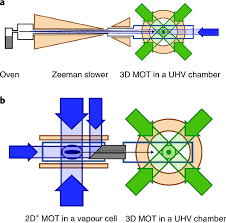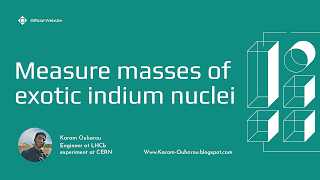Posts
Showing posts with the label Atomic nuclei
Unraveling the Enigmatic Conundrum: Deciphering the Intricacies of the Cosmological Constant Problem at the Nexus of Quantum Field Theory, General Relativity, and Cosmology
- Get link
- X
- Other Apps
Coherent Simulation of Correlated Electron Systems using Hole Spins in Germanium Quantum Dots
- Get link
- X
- Other Apps
Unveiling the Ferricyanide Photo-aquation Pathway through Cutting-Edge Spectroscopy Techniques
- Get link
- X
- Other Apps
Magnetic Flux Trapping in Hydrogen-Rich High-Temperature Superconductors - Unlocking the Mysteries of Enhanced Performance
- Get link
- X
- Other Apps
Laser Cooling - A New Frontier Explored in Anion Cooling
- Get link
- X
- Other Apps
Single-Photon Absorption and Emission from a Natural Photosynthetic Complex
- Get link
- X
- Other Apps
Excitonic Topological Order in Imbalanced Electron-Hole Bilayers
- Get link
- X
- Other Apps
Signatures of Fractional Quantum Anomalous Hall States in Twisted MoTe2
- Get link
- X
- Other Apps
Une mesure du CERN met en doute le résultat choquant du boson W
- Get link
- X
- Other Apps
Cylindrical machine with coil-like vertical structures | ''TOKAMAK DRAWING"
- Get link
- X
- Other Apps
Inside the Enigmatic Proton, the Most Complicated Thing Imaginable
- Get link
- X
- Other Apps
A new nuclear imaging prototype detects tumors’ faint glow
- Get link
- X
- Other Apps
Exposition interne, par contact et externe
- Get link
- X
- Other Apps
Quarks et leptons Les constituants fondamentaux de la matière
- Get link
- X
- Other Apps
Etats d'énergie du noyau - Analogie avec l'atome : des états d'énergie bien définis
- Get link
- X
- Other Apps
The atomic nucleus - The heart of the atom
- Get link
- X
- Other Apps
La représentation classique d’un noyau
- Get link
- X
- Other Apps
Ordres de grandeur - Prj. 1 - Physique atomique - Confé. Dr. Karam Ouharou
- Get link
- X
- Other Apps
Measure Masses of Exotic Indium Nuclei
- Get link
- X
- Other Apps








